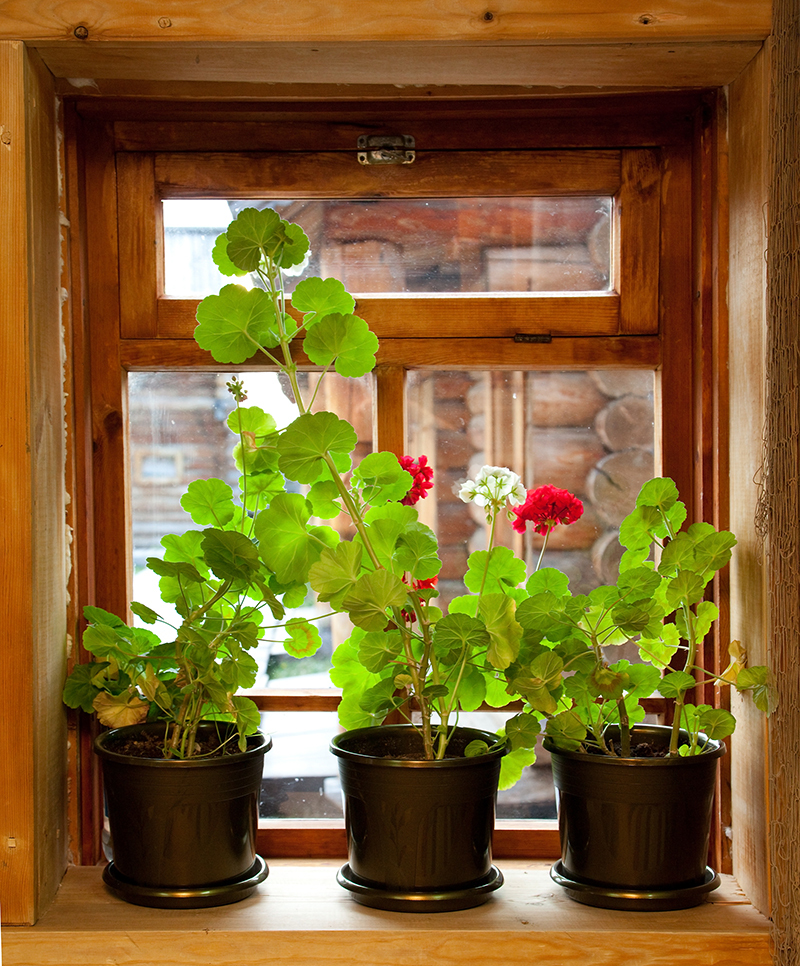Strategies for Enjoying Poinsettia Blooms Well Into the New Year
Poinsettias are more than just classic holiday plants -- with their vibrant bracts and festive appeal, they deserve to be enjoyed well beyond the holiday season. But did you know that with the right care and attention, it's possible to enjoy poinsettia blooms well into the New Year and even beyond? In this comprehensive guide, we'll explore proven strategies for keeping poinsettias thriving and maintaining their beautiful color for months.
Understanding the Poinsettia Life Cycle
Before diving into care techniques, it's important to understand how poinsettias grow and bloom. Native to Mexico, poinsettias are considered short-day plants, meaning they naturally bloom when the days grow shorter in late fall and early winter. The vibrant "flowers" you admire are actually modified leaves known as bracts, while the real flowers are small yellow clusters at the center called cyathia. Once these cyathia drop off, color can fade--but the right strategies can extend your enjoyment of these cheerful plants.

Key Tips for Extending Poinsettia Bloom Time
- Place in optimal light.
- Avoid temperature extremes.
- Water correctly (not too much, not too little).
- Maintain moderate humidity.
- Avoid drafts and direct heat sources.
- Remove spent blooms for a tidy look.
Let's break down each of these poinsettia care strategies to ensure your blooms last well into the New Year and maybe even return next season!
Optimal Placement and Light
Find the Perfect Spot
Poinsettias do best in bright, indirect sunlight for at least 6 hours a day. Direct sunlight may scorch their delicate bracts, while too little light will cause fading and leaf drop. Ideally, place your poinsettia near an east- or west-facing window, shielded by a sheer curtain. South-facing windows can also work if you can diffuse the light.
- Avoid placement near north-facing windows unless supplemental lighting is provided.
- Rotate the pot every week for even growth.
Maintain the Right Temperature
Poinsettias are sensitive to temperature; consistent conditions are crucial for extending bloom time:
- Ideal daytime temperatures: 65?F-70?F (18?C-21?C)
- Nighttime temperatures: 60?F (16?C) at minimum
Keep your poinsettia away from heating vents, fireplaces, and drafty windows. Sudden chills or exposure to cold blasts can cause leaves and bracts to drop prematurely -- swiftly ruining your chance to enjoy your plant into the new year.
Watering Wisely for Long-Lasting Blooms
The Goldilocks Principle: Not Too Much, Not Too Little
Consistent moisture, but not sogginess, is key. Overwatering leads to root rot and wilting, while underwatering will cause leaves to turn yellow and drop. Follow these tips:
- Check the soil daily; water when the top inch feels dry to the touch.
- Use room-temperature water to avoid root shock.
- Ensure pots have drainage holes. Remove any decorative foil or poke holes in the bottom.
- Empty saucers 15 minutes after watering to prevent sogginess.
Poinsettias are especially sensitive to excess water. If you're unsure, err on the side of slightly dry -- it's easier to revive a thirsty plant than one that's drowning!
Humidity: The Secret Ingredient
Poinsettias originate in the subtropics and do best in moderate humidity (around 50%). In winter, indoor air can be very dry due to heating systems, leading to crispy edges or bracts that fade prematurely.
Simple Ways to Increase Humidity:
- Place a shallow tray filled with pebbles and water under (but not touching) the pot.
- Group plants together to create a microclimate.
- Mist occasionally with a fine spray bottle (avoid wetting the bracts directly).
Holiday Decorations: Think Ahead for Longevity
Poinsettias are often decorated with glitters, ribbons, or other festive accessories. Remember:
- Remove decorations that block light or impede air circulation post-holiday.
- Gently dust off bracts if glitter was used.
- Watch for tie-ons or ornaments that might break fragile stems.
Fertilizing for Ongoing Health
After the bloom period, poinsettias can benefit from gentle feeding. However, do not fertilize while in full, vibrant bloom (usually late December to January). Start fertilizing when new growth begins or if you notice yellowing leaves after the holidays.
- Choose a balanced, water-soluble fertilizer such as 20-20-20 and dilute to half strength.
- Fertilize every 2-4 weeks through spring and summer.
This nourishment will support next season's blooms if you want to keep your poinsettia for another year.
Pinching and Pruning: Post-Holiday Care
When the Holidays Are Over
Don't discard your poinsettia when the bracts fade! With the right technique, you can keep it alive all year for a repeat performance next winter. Once blooming stops (usually late January or February):
- Cut the plant back to about 6 inches (15 cm) above the soil.
- Keep it in a sunny window and maintain regular watering.
- Fertilize monthly until late September.
- Move outdoors once the frost has passed (if your climate allows), keeping it in light shade.
Troubleshooting Common Poinsettia Problems
Leaf Drop & Yellowing
Possible causes: Sudden temperature changes, drafts, underwatering, or root rot due to soggy soil.
- Check for cold drafts near windows and doors.
- Reduce excess watering and improve drainage.
Wilting or Droopy Plants
Possible causes: Overwatering or underwatering.
- Assess soil moisture immediately.
- Repot if roots are mushy or dark (sign of rot).
Bract Fading
Possible causes: Too little light, excessive heat, or low humidity.
- Move to brighter spot (no direct midday sun).
- Increase humidity and maintain ideal temps.
Getting Poinsettias to Rebloom Next Year
If you're feeling adventurous, try encouraging your poinsettia to bloom again next holiday season. Here's a proven method:
- In September or early October, provide short days and long nights. Place your poinsettia in complete darkness for at least 14 hours nightly (such as a large box or closet) and return it to bright light during the day.
- Continue this regime for about 8-10 weeks. Even brief exposure to light at night may prevent blooming.
- Resume normal care and placement once color appears on the bracts in November or December.
This process forces the plant to bloom by mimicking its natural cycle, allowing you to enjoy poinsettia color well past the holiday season year after year!
Poinsettias as Year-Round Houseplants
Did you know that poinsettias can thrive as attractive green houseplants even after the colored bracts fade? While the showy red, pink, white or marbled bracts last for weeks or months, the lush green leaves provide a cheerful, foliage-rich look in your home. With regular pruning and good care, your poinsettia can become a lasting part of your indoor garden.

Additional Tips for Maximizing Poinsettia Enjoyment
- Choose healthy plants. When buying, select plants with little yellow pollen showing in the center (cyathia), as these last longest.
- Protect from cold during transport from the store--even a few minutes in freezing temperatures can cause leaf drop.
- Store away from pets; while not highly toxic, poinsettias can irritate sensitive animals.
- Remove wrapping or decorative foil when back home to prevent root rot.
- Consider re-potting into a decorative container with drainage for optimal growth and aesthetics.
Conclusion: Celebrate Your Poinsettia Beyond the Holidays
Poinsettias are iconic symbols of the holiday season, but with a few easy strategies, you can enjoy poinsettia flowers and colorful bracts well into the New Year and even throughout the year. Focus on optimal light, temperature, proper watering, and gentle feeding for the healthiest plants. Tackle problems early, consider trying the reblooming process, and appreciate the lush green foliage during the off-season. With this comprehensive guide, you'll be well prepared to enjoy poinsettia blooms for weeks (or months) past the holidays--adding beauty and cheer to your living space all winter long.
Enhance your New Year with lasting holiday color by following these expert poinsettia care strategies!

